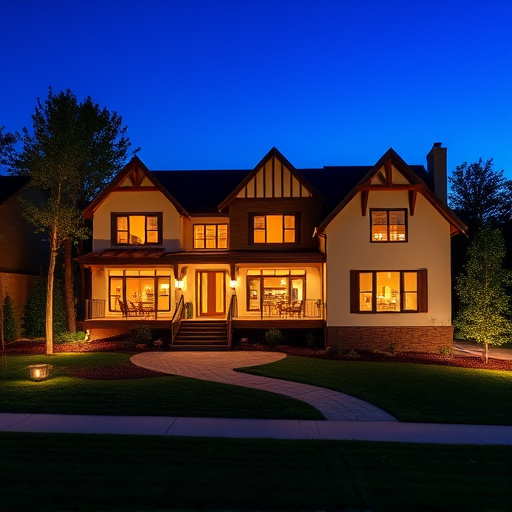Modern Quartz Countertops: Trendy Finishes for Your Home

Quartz countertops are trending in modern home design for their durability and aesthetic appeal. Res…….
Welcome to an extensive exploration of quartz countertops—a material that has transformed the way we design and build kitchens, bathrooms, and other interior spaces. This article aims to offer a comprehensive guide, delving into every aspect of quartz countertops, from their basic composition to global impact, technological innovations, and future potential. By the end, readers will have a profound understanding of this versatile material’s significance in the architecture and design industry.
Definition: Quartz countertops are a type of engineered stone that has gained immense popularity for its beauty, durability, and versatility. They are crafted by combining ground quartz with a small percentage of resins and pigments, then pressing and curing the mixture into solid slabs.
Core Components: The primary components of quartz countertops include:
Historical Context: The concept of engineered stone has been around for decades, but quartz countertops as we know them today emerged in the late 20th century. Early forms of artificial stone were often seen as inferior to natural materials like marble and granite. However, advancements in technology and the desire for more affordable yet high-quality options drove innovation. By the early 2000s, quartz countertops began to gain traction, particularly in North America and Europe, thanks to their superior durability, consistency in color, and low maintenance requirements.
Significance: Quartz countertops have revolutionized the surface industry by offering a practical alternative to natural stones. They provide:
The global impact of quartz countertops is profound, with its popularity extending across continents. According to a 2022 report by Market Research Future (MRFR), the global quartz countertop market size was valued at USD 4.5 billion in 2021 and is projected to reach USD 7.2 billion by 2028, growing at a CAGR of 6.7% during the forecast period. This growth is driven by several key trends:
| Region | Market Share (2021) | Growth Rate (CAGR 2021-2028) |
|---|---|---|
| North America | 35% | 7.2% |
| Europe | 28% | 6.5% |
| Asia-Pacific | 32% | 7.5% |
| Rest of the World | 5% | 4.8% |
International Influence:
Regional Trends:
The economic landscape surrounding quartz countertops is complex and dynamic, influenced by various factors.
Market Dynamics: The market for quartz countertops is highly competitive, with a mix of global manufacturers and local producers. Key players include companies like Silestone, Caesarstone, QuartaZ, and Hanstone, each offering unique products and design options. The availability of these materials in various price points caters to diverse consumer preferences and budgets.
Investment Patterns: Quartz countertops have become a popular investment choice for property developers and homeowners alike. The perceived value and longevity of quartz make it an attractive option for upgrading or remodeling existing spaces. According to the National Association of Realtors (NAR), kitchen upgrades, including countertop replacements, are among the top reasons for home improvement projects in the US.
Economic Impact:
Technological innovations have played a pivotal role in shaping the future of quartz countertops. Here’s an overview of some key advancements:
The development and use of quartz countertops are subject to various policies and regulations that differ across regions. These measures ensure safety, quality, and environmental sustainability.
Safety Standards: Organizations like Underwriters Laboratories (UL) and Intertek set safety standards for quartz countertops, testing their fire resistance, dimensional stability, and chemical composition. Compliance with these standards is essential to ensure product safety.
Building Codes: Local building codes often dictate the types of materials used in construction, including countertop installations. Developers and contractors must adhere to these regulations when selecting quartz countertops or any other material for new builds or renovations.
Environmental Regulations: As the demand for eco-friendly products grows, manufacturers face pressure to reduce their environmental footprint. Some regions have implemented strict guidelines on water usage, energy consumption, and waste management during quartz production.
Export/Import Controls: International trade regulations may apply when exporting or importing quartz countertops, particularly concerning tariff rates, import quotas, and product standards. These measures ensure fair trade practices and protect domestic industries.
Despite its numerous advantages, quartz countertops face certain challenges and criticisms that manufacturers, designers, and consumers should be aware of.
Cost: While quartz is generally more affordable than natural stones like granite or marble, it can still be pricier than some alternative surfaces. This higher cost may deter budget-conscious consumers. To address this, manufacturers have introduced more economical lines without compromising quality, making quartz more accessible.
Care and Maintenance: Despite being easy to clean, quartz countertops require occasional sealing to maintain their durability and prevent staining. Some users have reported issues with delaminating (separation of the resin from the quartz) over time, although this is often associated with poor installation or care. Proper maintenance and regular sealing can mitigate these concerns.
Design Limitations: While quartz offers a vast array of colors and finishes, it may not match the unique visual appeal of natural stones or custom-made materials. Some designers argue that quartz lacks the ability to create intricate patterns or one-of-a-kind pieces. However, advancements in technology are continually expanding the design possibilities of quartz countertops.
A bustling city loft renovation project showcased the versatility and durability of quartz countertops. The designers aimed to create a modern, industrial-chic space with functional yet aesthetically pleasing surfaces. They selected a grey quartz slab for the kitchen island and counter tops, paired with stainless steel appliances and a concrete floor. The result was a seamless, contemporary design that met the client’s requirements for both style and practicality.
In a remote mountain resort, architects incorporated eco-friendly practices into the hotel’s design, including the use of quartz countertops. They chose a local manufacturer who utilized recycled materials and sustainable production methods to create unique, natural-looking quartz slabs. The countertops featured intricate veining and colors inspired by the surrounding landscape, seamlessly integrating the interior with its natural setting.
A luxury home renovation project in a coastal city showcased the elegance of quartz countertops in a high-end residential setting. The designers opted for a rich, deep blue quartz slab for the kitchen island and counter tops, contrasting sharply with the white cabinets and stainless steel appliances. The result was a dramatic, statement-making space that impressed both homeowners and guests.
The future of quartz countertops looks promising, with several emerging trends and strategic considerations shaping its trajectory:
Quartz countertops have undoubtedly left an indelible mark on the design and construction industry, offering a versatile, durable, and aesthetically pleasing alternative to natural stones. Its global impact is evident in the widespread adoption across diverse regions, fueled by economic incentives and technological advancements. As the material continues to evolve, it will play an even more significant role in shaping the future of kitchens, bathrooms, and other interior spaces.
By addressing challenges, embracing sustainability, and pushing the boundaries of design, quartz countertops are poised for continued success. This article has provided a comprehensive overview, highlighting the key aspects that contribute to its widespread popularity and future prospects. As the material adapts to new trends and technologies, it will undoubtedly remain a favorite choice for designers, developers, and homeowners worldwide.
Q: Are quartz countertops heat-resistant?
A: Yes, quartz is highly resistant to heat and can withstand high temperatures without damaging or deforming. This makes it ideal for kitchen and bathroom applications where hot items are frequently placed on the countertop.
Q: Can quartz countertops be repaired if damaged?
A: Absolutely. Minor scratches and chips can often be repaired by professionals using specialized tools and resins to match the existing surface. In more severe cases, replacing a small section of the countertop is feasible.
Q: Are quartz countertops suitable for outdoor use?
A: While quartz is durable, it may not be the best choice for prolonged outdoor exposure due to potential sun damage and UV fading over time. For outdoor countertops, materials like granite or concrete might be more suitable.
Q: How do I care for quartz countertops?
A: Regular cleaning with mild soap and warm water is sufficient. Avoid using abrasive cleaners or scrubbers. Periodical sealing (typically every 1-2 years) helps protect the surface from stains and enhances its durability.
Q: Can quartz countertops be installed over existing surfaces?
A: Yes, quartz countertops can be installed over various surfaces, including wood, concrete, and tile. Professional installation is recommended to ensure a seamless finish and proper adhesion.

Quartz countertops are trending in modern home design for their durability and aesthetic appeal. Res…….

Inspect quartz countertops for scratches, chips, and cracks. Gather a repair kit with resin, pigment…….

Quartz countertops, known for durability and low maintenance, can show signs of wear like scratches,…….

Quartz countertops are popular for modern open floor plans due to their sleek aesthetics and durabil…….

Quartz countertops, popular for their durability and low maintenance, are ideal for home transformat…….

Eco-friendly quartz countertops are durable, low-maintenance solutions for kitchens, bathrooms, and…….

Quartz countertops are a popular choice for kitchen and bathroom remodels due to their durability, v…….

Quartz countertops are renowned for their durability and strength due to their mineral composition (…….

Choose quartz countertops with warm or cool tones to suit your design style. Match colors with backs…….

Quartz countertops are durable and low-maintenance due to their blend of natural quartz, resin, and…….